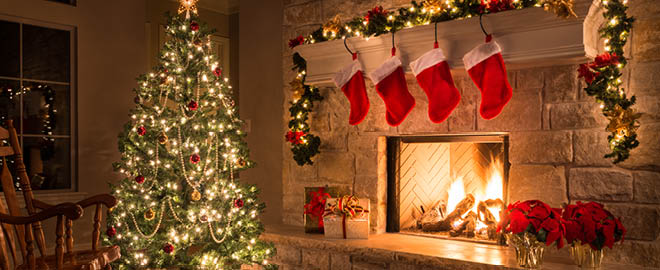How Much Electricity do Christmas Lights Use?

As the holidays approach, we are all looking for ways to save for Christmas splurges, so finding ways to conserve cash can make all the difference. One thing that often gets overlooked and could be costing you money is your Christmas lights. Many of us are guilty of leaving our lights up longer than we should, but just how much are your holiday lights actually costing you? We’ll give you some insights to help you calculate how much electricity your Christmas lights use.
Do Christmas Lights Use a Lot of Electricity?
You might be thinking those little Christmas lights can’t have that much impact on overall energy consumption. But, when viewed on a global scale, the total energy consumption of America’s holiday lighting is significant. In 2015, the Center for Global Development illustrated how the U.S. expends more electricity on just Christmas lights than the whole country of El Salvador uses in an entire year —a whopping 6.6 billion total kilowatt hours! To put that in context, as explained by the article, that’s enough electricity to power 14 million refrigerators.
But, there’s no need to say ‘bah, humbug’ just yet. Even though Christmas lights use a considerable amount of energy, it’s possible to cut back on the electricity you use while still decorating for the holiday season.
Ways to Make Your Holiday Energy-Efficient
Like all energy consumption habits, one of the best ways to start saving is to evaluate your current usage. Knowing how much energy you consume is the first step in making choices that will reduce both your impact and your costs.
Know Your Light Bulbs
With so many varieties of lights and bulbs available, it’s hard to know the energy and cost benefits of one type over another.
How Many Watts do Christmas Lights Use?
The chart below looks at the most common types of holiday light bulbs and their average operation costs:
|
Bulb Type |
Wattage per Bulb |
Cost of Powering 10, 100-bulb strands (at avg. $0.12/kWh)* |
|
Incandescent mini light |
.41 |
$10.33 |
|
Incandescent C7 (2”) light |
5 |
$126.00 |
|
Incandescent C9 (3”) light |
7 |
$176.40 |
|
LED mini light |
.07 |
$1.76 |
|
LED C9 (3”) light |
.09 |
$2.27 |
*Calculated based on an average 6hrs of use for the 35 days spanning from Thanksgiving through the end of December
Based on this chart, you can see just how the types of lights you buy will impact your energy use and costs. Chances are that you will use a combination of these to light your house, both inside and out. For example, perhaps you like the look of larger C9 bulbs for the outside but prefer to adorn your tree with mini lights. Thankfully, many manufacturers are creating energy-efficient alternatives to the most popular bulb types. Opting for energy-efficient light bulbs—such as the LED versions—will save you money on your electric bill and reduce your consumption.
While energy-efficient LED strand lights are generally more expensive than strands of the traditional incandescent mini lights, the cost is typically offset by the drastic reduction in electricity consumption. Additionally, LEDs typically last much longer, and a single bulb malfunction won’t cause an entire strand to fail. The end result is that, by using less energy and having to replace fewer strands, you can save a little more holiday spending cash.
In addition to LED options, strands of solar powered Christmas lights—generating their power supply independent from an electricity source—are available at many retailers.
When to Turn Off Christmas Lights
Another way to control the energy your decorations use is to manage the amount of time your Christmas lights are on during the holiday season. You can purchase simple timers for your holiday lights that allow you to manually set the amount of time your lights are on, which can be adjusted as the days grow shorter or longer.
In addition, consider when you put up your outside lights and when you take them down—waiting a week or two before hanging the lights next year and then packing them up right as the holiday season ends can be a good strategy for taking another small amount off of your energy usage. After all, if the lights aren’t up, you won’t be tempted to leave them on.
If you want to be more energy efficient, IGS has additional tips to minimize your daily energy usage in your home, and serves areas all over the country.
Check the available products in your area today!